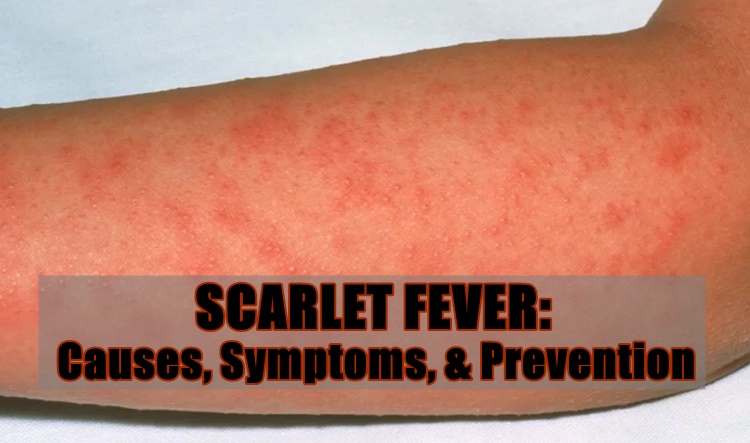Here are the causes, symptoms, and ways to prevent scarlet fever
SCARLET FEVER – This health condition also known as scarlatina which is a bacterial illness that develops in some people who have strep throat.
People who are suffering from this often have a sore throat and a high fever. Commonly, this condition occurs to children from 5 to 15 years old. In the past, it is considered as one of the most serious health conditions of children but antibiotic treatments made it easier to be treated. However, if neglected this can lead to other complications and will affect other parts of the body such as heart and kidney, according to the article from Mayo Clinic.

CAUSES
The same type of bacteria that cause strep throat also causes scarlet fever which releases a toxin that produces the rash and red tongue. It can be contagious when a person’s droplet expelled after sneezing or coughing spread. The time between exposure and illness or the incubation period is usually two to four days.
SYMPTOMS
- Red rash – This usually looks like a sunburn and feels like sandpaper and typically begins on the face or neck and spreads to the trunk, arms, and legs. Once pressure is applied to the reddened skin, it will turn pale.
- Red lines – The folds of skin in various parts of the body such as around the groin, armpits, elbows, knees, and neck usually become a deeper red than the rash.
- Flushed face – Symptoms can also be seen on the face as it may appear flushed with a pale ring around the mouth.
- Strawberry tongue – The tongue generally looks red and bumpy. Early in the disease, the tongue is usually covered with a white coating.
Based on the article, the redness and rash of the face typically last for about a week. Then, the rash often peels, after the symptoms subsided. In most cases, patients also feel these symptoms:
- Fever of 101 F (38.3 C) or higher, often with chills
- Very sore and red throat, sometimes with white or yellowish patches
- Difficulty swallowing
- Enlarged glands in the neck (lymph nodes) that are tender to the touch
- Nausea or vomiting
- Headache
PREVENTION
Just like other infections, there is no vaccine for Scarlet Fever but there are ways to prevent this similar to the prevention for other infectious diseases.
- Wash your hands thoroughly with warm soapy water.
- Don’t share dining utensils or food and make sure to impose this to your child in their school
- Cover your mouth and nose especially when coughing and sneezing to prevent the potential spread of germs.
- Wash the utensils and toys of your child with hot soapy water.
READ ALSO: Top 10 Health Conditions Affecting Millennials & Why #1 Happens
